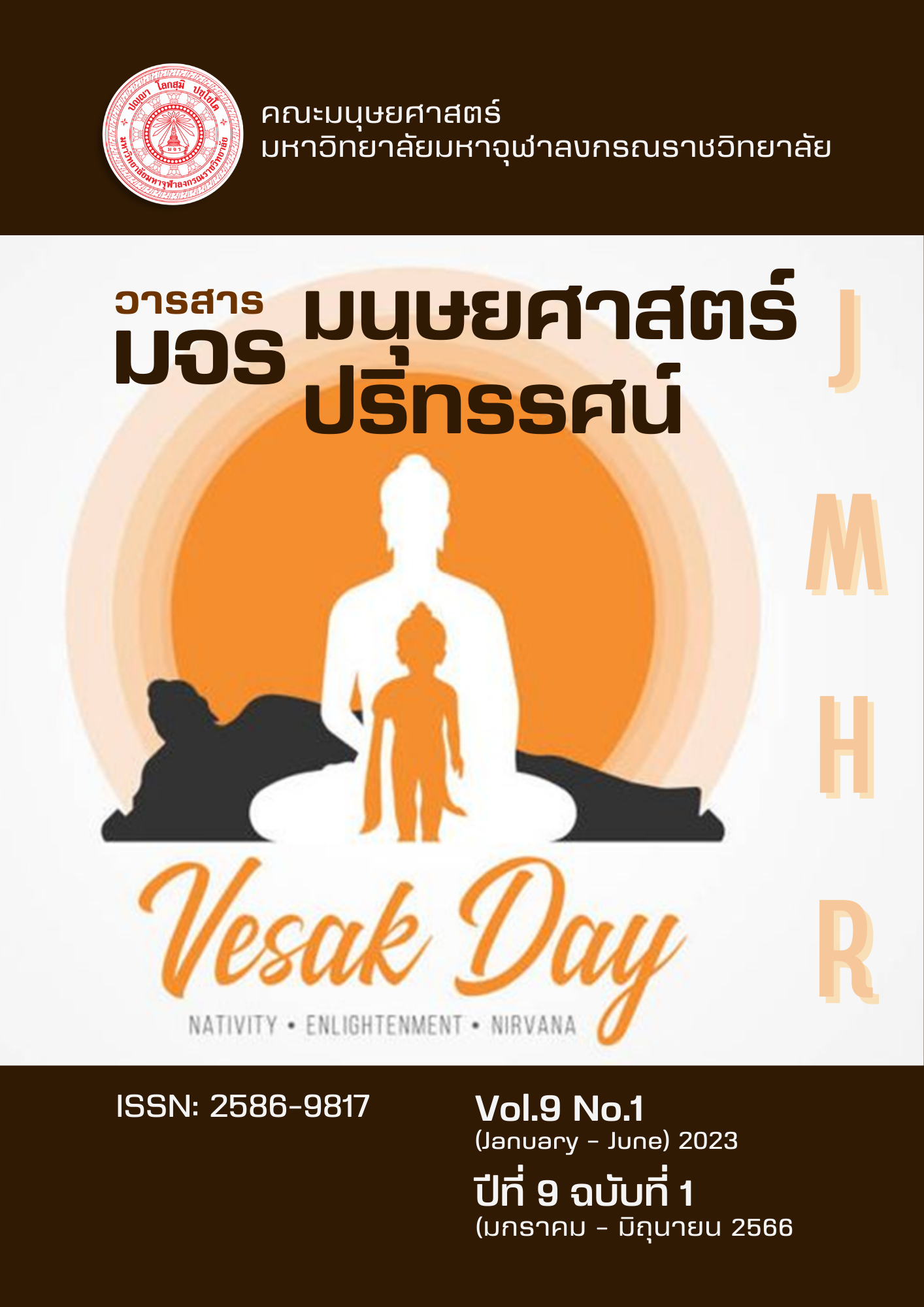A Comparative Study Between English and Bengali Word Formation
คำสำคัญ:
English Word, Formation, Bengali Word, Affixation, Comparisonบทคัดย่อ
The objectives of this study were: 1. to study the word formation in both Bengali language and English language. 2. to compare the word formation between Bengali and English language. This research was a qualitative method and used the analysis of the processes of word formation in English and Bengali. Also, the study would contribute to linguistics research findings and meta-theory, including to compare several processes involved in the formation of words in English and Bengali. Research tools were used research works, books, documents, dictionary format (Bengali and English), thesis, documentaries, articles, library and online research about Bengali and English word formation. Data collection was prepared on the selected research topic, journal articles, research papers, reports, books, websites, and governmental, non-governmental publications. The researcher also analysed data based on a description of English and Bengali word formation processes through four steps given.
The finding of research found that 1) Forms of English and Bengali languages using some processes for instance, affixation, acronyms, alternation, blending, borrowing, clipping, compounding, reduplication. 2) Comparison of the word formation between Bengali and English language in the similarities as the word is formed in both English and Bengali using derivational and inflectional morphology, regularly use affixes as the primary facility for word construction including, both languages are connected with changes in tenses, personal pronouns, and numerical pronouns and commonly used in duplication and reduplication included the pronouns that act as direct or indirect objects. For the differences found that in morphology, both English and Bengali employ distinct terminology, English nouns lack a singular marker but the Bengali has a marker for singular and plural nouns, Nouns in Bengali must also be accompanied by the appropriate measure word when counted. In contrast to English, nouns in Bengali cannot be directly counted by adding the numeral immediately adjacent to the noun, in contrast to English, Bengali nouns are also case-sensitive, including nominative, objective, genitive (possessive), and locative including the terms of singular and plural affixes, English and Bengali are morphologically clearly different.
เอกสารอ้างอิง
Aussant, E. (2016). To classify words: Western and Indian Grammatical Approaches. Retrieved May 3, 2021, from https://shs.hal.science/halshs-01396088
Chatterji, Kumar and Suniti. (1962). The Origin and Development of the Bengali Language, Part 1. Retrieved May 3, 2021, from https://archive.org/details/OriginDevelopmentOfBengali/CHATTERJI_Origin-Development-of-Bengali_Vol-1/
Cannon Garland. (1986). Blends in English Word Formation. Retrieved May 3, 2021, from https://doi.org/10.1515/ling.1986.24.4.725
Dimock Edward. (1964). Introduction to Bengali. Honululu: East-west center press.
Harley H. (2009). English Words: A Linguistics Introduction. London: Blackwell Publishing Ltd.
Lederer, R. H. (1980). English Word-making. University of New Hampshire Scholars. Retrieved June 21, 2021, from https://scholars.unh.edu/dissertation/1285
Renfrew, C. (1989). The Origins of Indo-European Languages. Retrieved June 21, 2021, from http://www.jstor.org/stable/24987446
ดาวน์โหลด
เผยแพร่แล้ว
รูปแบบการอ้างอิง
ฉบับ
ประเภทบทความ
หมวดหมู่
สัญญาอนุญาต
ลิขสิทธิ์ (c) 2023 วารสาร มจร มนุษยศาสตร์ปริทรรศน์

อนุญาตภายใต้เงื่อนไข Creative Commons Attribution-NonCommercial-NoDerivatives 4.0 International License.






